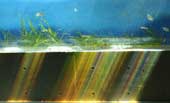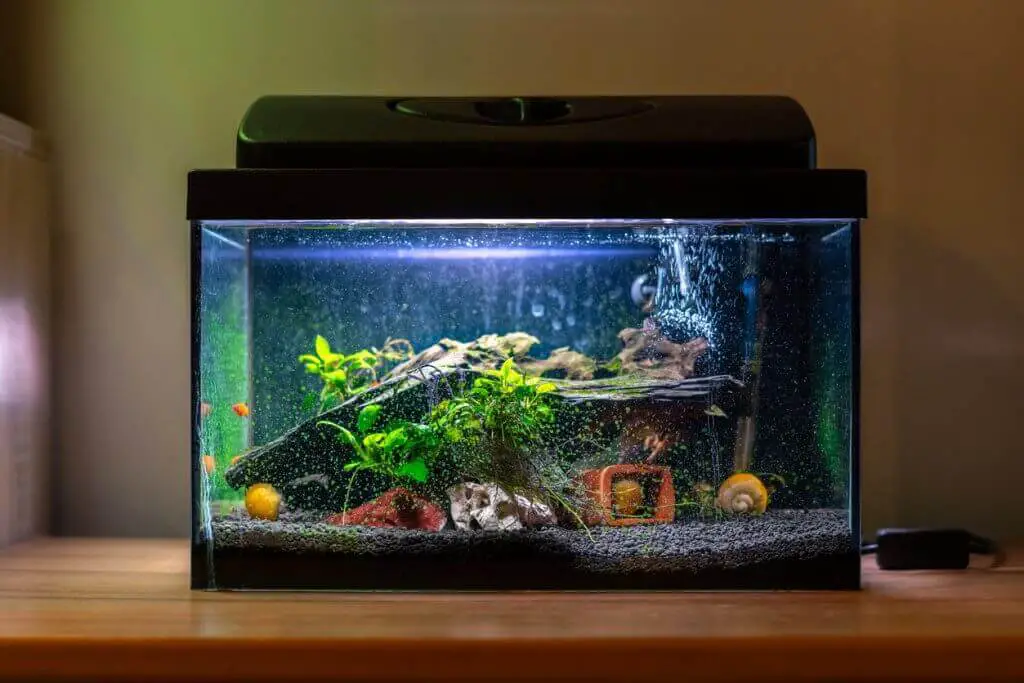Important tips to maintaining your saltwater tanks.
Saltwater Maintenance
The cycling process will undoubtedly be the most tense time for you and your new tank. So below is a guide to the first few days and months of your tank.
Monitoring the Ammonia and Nitrates in the tank
Over the course of the first 4 to 6 weeks your tank will demonstrate the typical cycling process. During this critical time, you should carefully watch the ammonia and nitrites in the tank. If the fish look stressed (darting around the tank, gasping for air, or not moving at all), a partial water change might be in order. If the fish look really bad, they may have to be moved to another tank or storage location until the toxicity of the tank is reduced. You should always keep salt mix and dechlorinated water on hand for impromptu water changes.
Monitoring the PH
Along with monitoring ammonia and nitrites, you should keep a careful eye on the pH (you should always watch the pH, not just during the cycling process). The pH will tend to fall over time and needs to raised. The easiest way to raise the pH is through additions of sodium bicarbonate (i.e., baking soda). Mix a tablespoon or so of baking soda in a cup of dechlorinated water and slowly add it to the tank. Slowly means over the course of an hour or two. Baking soda will cause a short term drop in the pH, but will bring the pH to 8.2 over time.
Water Evaporation: adding new water to tank
As time marches on, water will evaporate from the tank and need to be replenished. The water that evaporates is freshwater and needs to be replaced with freshwater. You should never use saltwater for makeup water (unless you want to increase the salinity of the tank).
Cleaning up of Algae
As the tank matures, algae will start to grow (usually around week 2 or 3). Typically brown algae, otherwise known as diatoms, will be the first algae that shows up in the tank. Brown algae will usually cover everything in the tank and need to be cleaned every week or so. With time green algae should overtake the diatoms and the brown algae will disappear all together. If it doesn’t, there might not be enough light for the green algae to out-compete the diatoms.
First Major Water Change
After the tank completes cycling, it will be time for your first major water change. Although the amount of water you change is really up to you, it should be a significant portion of the water. Something like 40 to 50%, with 100% of the water not being uncommon. When changing the water, the gravel should also be cleaned. There are many commercially available gravel cleaners on the market.
The chemistry of the change water should be as close to the tank’s water as possible. The pH should be within 0.2 and the temperature should be within 1-2 degrees. It is better to have the change water warmer than cooler (imagine the shock of a cold shower and you will know how your fish will react to cooler change water).
Regular Maintenance Schedule
After the first water change you should establish a regular maintenance schedule. Something like monthly water changes, weekly algae scrapings, and bi-weekly feedings are normal.
A Note on Nutrition
Saltwater fish need varied diets. Constantly feeding your fish flake food may provide it with all the necessary vitamins and minerals, but this may ultimately cause a nutrition deficiency of sorts. Alternating between cut up shrimp and clam, flake food and frozen/live brine shrimp makes a good combination. Herbivorous fish, like Yellow Tangs, also like romaine lettuce or Nori (an algae regularly sold at oriental markets) on a regular basis.


